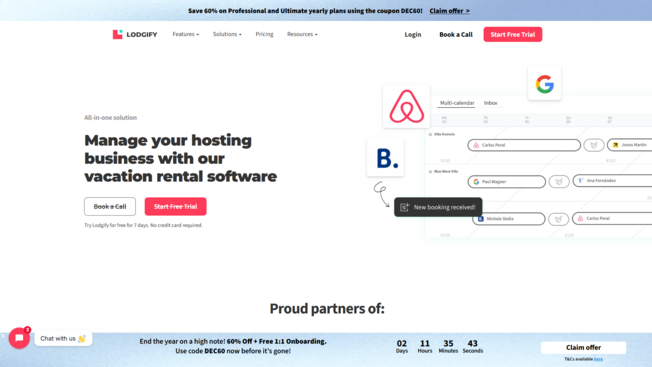
I'll admit it. When I was first offered to step into the shoes of an educator for both kids and young adults, my heartbeat soared and my mind went wild… with fear.
Those of you who know me since our student days would recall my favourite spot in the classroom. Yeap, right at the back, right in the corner. The furthest from the teacher’s table. No prizes for guessing why!
While my teachers probably didn’t notice me, somehow the forces of the galaxy did.
And by some turn of events, I’ve found myself enthusiastically teaching in the classroom, front and centre, and getting annoyed at why students would want to sit right at the back, right in the corner.
Interestingly, it is that stark contrast that compelled my lifelong interest of scrutinising how people learn. How they are kept engaged. How they are intrinsically motivated to know what’s next.
The ultimate goal? So that they can transform their lives thereafter with the knowledge they’ve acquired. That's the purpose of education.
So, brooding on a year of intense prototyping in the field; be it attending training courses to upskill myself, developing curricula for kids and adults, or facilitating groups with various teaching techniques… there was one question that I found remarkably critical as an educator.
“Are my students enjoying the learning process?”
It can be easy for students to regurgitate concepts and apply them in various contexts… and for the teacher to assume that everything is going fine. However, isn’t it a shame when students are dead inside, doing just for the sake of doing?
So goes the popular saying on the internet: “Everyone asks what you’re doing. No one asks how you’re doing.”
To make things worse, a disconnected student will have all the content go into one ear and out the other. At the end of class, the brain will only remember a ‘Dunno’.
Mind you, ‘Dunno’ doesn’t just mean ‘I don’t know.’
It also can mean ‘I don’t want to care’ about the content.
This wastes everyone’s time and it is scary how often I’ve heard students whisper about how dead their lessons are. Imagine if you were the educator. Ouch!
And since I’m not a fan of non-fiction horror, I’m urgently raising awareness of 3 student signals to look out for, to check if students are enjoying the learning process.
And as thanks for staying this far, you’ll also get tested and proven tips to keep them engaged, online or offline. Now profit:
Student Signal 1: “Is my presence appreciated?”
Apart from being excited when joining a class for the first time, students also experience anxiety over fitting in, loneliness if they join without friends, or even reluctance if they were forced to sign up.
If the educator is not careful about empathising with their viewpoint and making them feel welcome from the start, it would not be a surprise if these students become emotionally disconnected for the entirety of the session. The motivation to learn then fizzles out.
An effective antidote to this issue would be to get up close and personal, placing them at the heart of the action. For a start, acknowledge students by their names, down to the pronunciation!
Interestingly, kids are especially sensitive about this. Mispronounce their names, and respect for their educator can drop immensely! Adults may not be so particular about this but after all, names do give us self-worth, and bothering to get them right conveys the fact that you care.
Another common scenario sees students enthusiastically engaged in discussion. The problem is, what is discussed is anything but the classroom’s topic at all!
While it is of logical instinct to shut students down immediately so as to focus back on track, educators must note the manners in which they do so.
The common ‘Be quiet, or else…’ outburst, while momentarily effective, can sting overtime and leave a sour aftertaste in students. For educators who are familiar, it can embolden some students to be even more defiant.
So how can this side-tracking be addressed, then?
Bring their voices into the conversation! With the access to digital tools nowadays, mobile surveys can be conducted on the spot to gather students’ interests or burning questions. Think of it as getting onto common ground with them.
The super skill then, as an educator, would be to channel these questions and energies into motivation for learning!
An example: “I see that many you enjoy watching Star Wars. Well then, I’ll bring in some relevant analogies to make the learning easier!”
There’s a double-benefit here: Firstly, the students feel appreciated, having been given permission to have their contributed interests put to use. Secondly, they are sharp enough to notice that their educator is on a similar wavelength with them. That’s one step closer to being added to their ‘cool’ book!
The result thereafter? A surge of confidence and sense of ownership. And that’s on top of the completed deliverables.
And where kids are concerned, I must stress this: Never assume that they are amateurs. Just like adults, they yearn to be respected. Their young minds remember deeply, and they often surprise adults with profound questions.
Student Signal 2: “Is it worth sharing the content with others?”
You’ve spent so much time putting together your powerful ideas into compelling stories. The last thing you would want are blank stares and fried brains from your students.
On the flip side, who wouldn’t grin with satisfaction (and relief) from seeing their students bask in ‘Eureka’ moments, excitedly sharing their findings with their friends? This is a great setup for organic marketing, and keeps you from having to explain concepts over and over again.
The key is to make information ‘snackable’. One common practice is to include one point per sentence. That’s great! Now what else can you do?
One trick I’ve observed great teachers use is to bring in relatable analogies to explain an abstract concept. By using a universal reference such as the body, which we are all familiar with, understanding can then take root at a comfortable pace!
Another example is to spice up the theme. Observe how a regular project briefing got converted into a 'James Bond mission briefing':
And to make the learning stick further, I throw in some light-hearted humour, which the students bring up with laughter time and again in future classes. And I then laugh like a supervillain whose plan has worked perfectly.
This builds up learning experiences of style, that students will then want to share with their peers, gaining social currency and admiration in the process. I believe this is a very strong driver of how content is shared.
And if I want to assess what students have learnt, I drop my ego and take on the role of the ‘blind village idiot’, requesting them to become the ‘village chiefs’ and literally point me through their deliverables. During the ‘tour’, I’ll sneak in all kinds of questions to test their recall of concepts. This setting also empowers students to school their educator!
And the most effective form of learning… is by teaching! See what I did there?
Student Signal 3: “Am I benefiting beyond the lesson?”
It is easy to get caught up within the ecosystem of the classroom, and drop everything related once leaving it. Down the road, with raised eyebrows, students will wonder if that lesson was even worth their time and attention.
As many will appreciate, time and attention and two precious currencies in today’s fast-paced world. To trade these out for something in return requires strong, motivating incentives. So, what works?
Simply put, long-term benefits. Some examples:
A. Lifelong access to privileges:
Much like unlocking a new tier of mission tools in online games, tips and resources of an advanced nature can be revealed to students who prove their mastery and maturity in understanding content. One system that worked was to allow kids to use penknives for craftwork, only after they had mastered the scissors. They cherish the trust invested in them.
B. Collectible skill badges:
Note that the focus should be on what the badge represents, and not the badge itself. An example for kids was to associate such badges with life skills such as creativity. So once awarded, these would serve as mementos of their abilities, and what more they can aspire to be. As an added touch, the badges were fashioned with an exclusive aesthetic, so that they could not be acquired anywhere else on Planet Earth.
C. Portfolio playbook: A PDF/ printed compilation of works that quantify students' developmental progress of their skills. These can serve as ‘booster packs’ for their personal branding and resumes in the future.
So in conclusion, what do you get when these 3 questions are well taken care of? A learning journey that is fun, engaging and seamless. Not just for the students… but for educators, coordinators and parents alike.
After all, learning is critical to life itself, and with lifelong learning taking root as a societal norm, getting it to pay off is well worth the effort.
And by now, you will realise that these tips don’t just apply to the field of education. Even casual conversations in everyday life can be enriched, with these signals kept in mind.
My gratitude for making it to the end! Now get back out there, power up and seize the day! 😊


























Leave a Reply